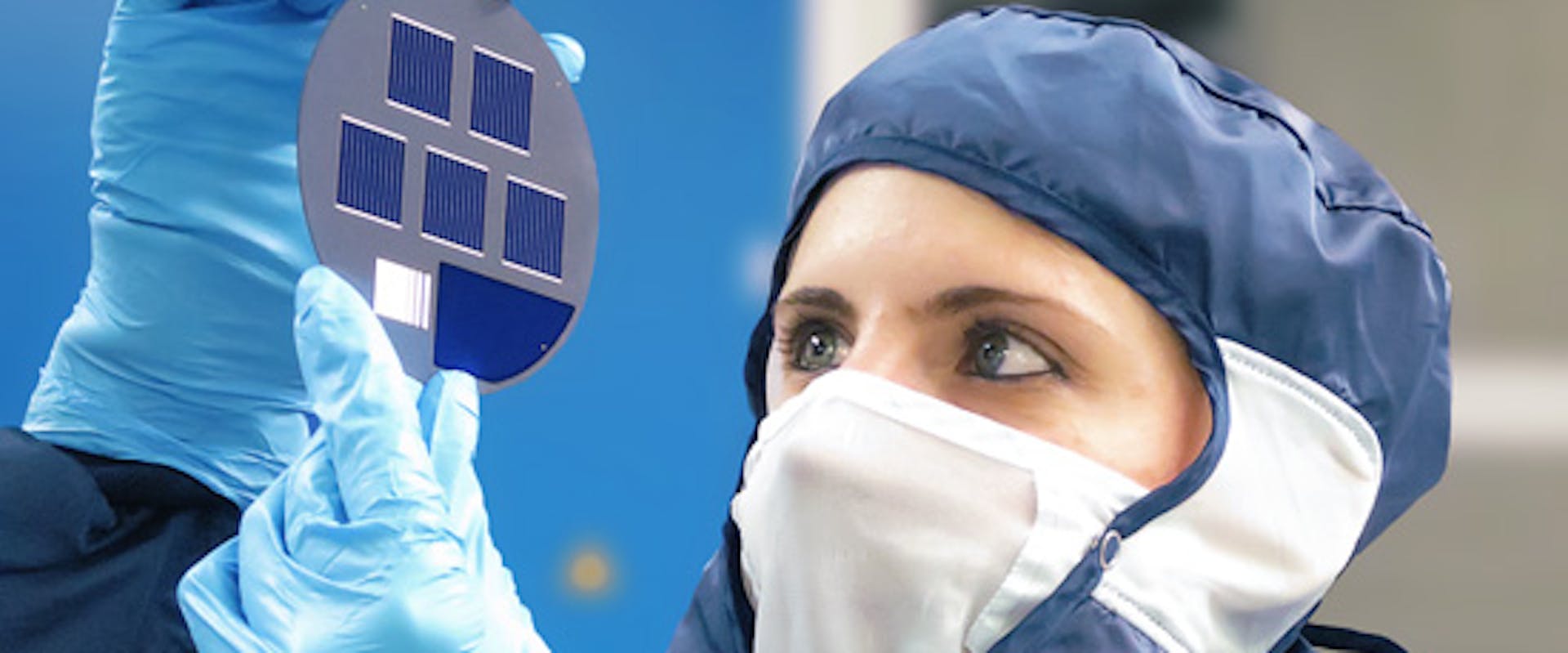New records for the solar cell of tomorrow
Researchers at CSEM have made an important leap toward cost-effective solar energy by raising the one-sun efficiency of a fully industry-compatible silicon heterojunction solar cell to 24.2 %.

CSEM began working in the domain of sustainable energy in 2013, and since then has been developing advanced materials, processes, and concepts to foster the market entrance of silicon heterojunction technology. Recently, its teams realized a two side-contacted silicon heterojunction solar cell with an efficiency as high as 24.2 percent (independently certified by ISFH CalTec, Germany). This is among the highest efficiencies reported for such a device, further demonstrating the high potential of this technology. This outstanding result was made possible by the accurate tailoring of the manufacturing process based on the unique know-how of CSEM in thin-film deposition. Remarkably, this device was entirely fabricated using industry-compatible techniques, such as plasma-enhanced chemical vapor deposition and sputtering for thin-film deposition and screen printing for realizing the electrical contacts at the front of the solar cell.
“This achievement was made possible by an in-depth understanding of the physical phenomena currently limiting the transport of the charge carriers within the solar cells, and by a smart combination of thin silicon layers to mitigate these detrimental effects,” explains Laurie-Lou Senaud, the PhD candidate in charge of these developments. “This device evidences that silicon heterojunction technology features numerous assets when it comes to providing record-high efficiency with a very lean process flow,” adds Bertrand Paviet-Salomon, her thesis co-director.
CSEM's sustainable energy teams are now actively working toward achieving even higher efficiencies, by continuously mitigating the loss mechanisms occurring within the solar cells. The gap to the current worldwide record heterojunction device, with 25.1 percent efficiency, is hence expected to be bridged soon.
CSEM will be present its latest achievements in solar cells and modules at the upcoming SiliconPV Conference in Leuven (Belgium) and at the IEEE Photovoltaic Specialists Conference in Chicago (USA).


